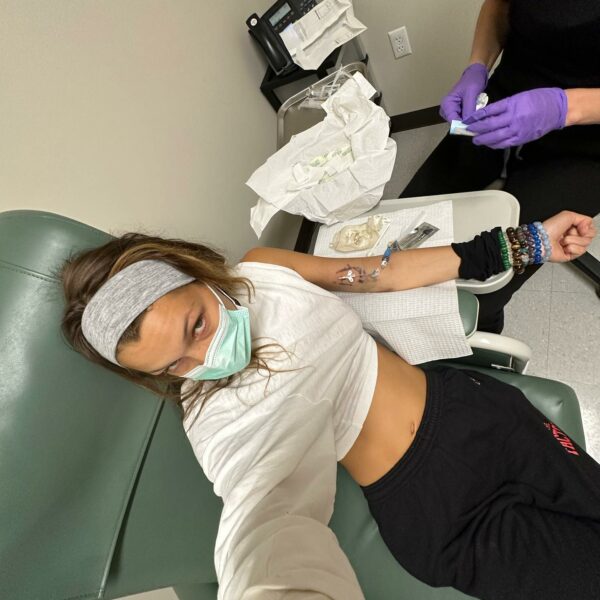We know we need to eat our veggies, and we’ve been told to get plenty of greens. But what about our blues? Our reds? Our purples? Vibrantly colored produce has some serious health benefits, namely antioxidants, but other compounds as well that can support our longevity, beauty, and the prevention of many illnesses and degenerative diseases.
It’s not about making sure we get a ton of one color (we love a green smoothie as much as the next wellness-obsessed person), but it’s really about consuming a well-balanced rainbow, on the daily. Making sure we get variety throughout the day, week, and especially the season will ensure that we are nourishing optimally. Deficiency? Don’t know ‘er.
We spoke with Sarah Mirkin, registered dietitian, health coach, and founder of Kitchen Coach, for a breakdown of this colorful palette and what it means for our health.
“Red and pink fruits and vegetables such as tomatoes, pink grapefruit, watermelon, and pink guava are high in the antioxidant lycopene, which reduces the risk of prostate cancer as well as most chronic illness.”
Lycopene has been shown to prevent and reverse cardiovascular diseases, as well as have anti-cancer effects. Watermelon is also a super source of lycopene, which is not the only component in these bright red and pink fruits and veggies. Red peppers, another great source of lycopene, have more vitamin C than an orange—vitamin C being a building block of collagen to support the skin matrix and digestive health.
“Orange vegetables such as carrots, sweet potato, cantaloupe, and pumpkin are high in the antioxidant beta carotene, which may protect eyesight and reduce the risk of lung cancer and other cancers,” Mirkin shares.
Beta carotene is a form of vitamin A. Guess what else is made from vitamin A: retinol. Beta carotene is not only great for eye health but also our skin health. A diet rich in beta carotene can help absorb UV light, acting like a natural sunscreen from the inside out. Its antioxidative properties prevent oxidative free-radical damage to the skin, as well.
“Purple and blue pigmented fruits and vegetables such as black currants, blackberries, blueberries, the skin of eggplant, red cabbage, cranberries, and cherries contain a class of antioxidants that are flavonoids called anthocyanins. These are not only helpful in cancer prevention but may also offer anti-inflammatory and anti-viral benefits.”
The antimicrobial, anti-cancer, and anti-chronic disease effects are all thanks to their potent antioxidant activity. In fact, if we are faced with a choice at the store between a green or other-variety vegetable (think cabbage, cauliflower, or sweet potato) and their purple counterpart, we say always, always go with the purple variety. It will be loaded with that much more disease-fighting and anti-aging flavonoids.
“Dark green vegetables such as spinach, broccoli, and asparagus are rich in chlorophyll. Proven benefits of chlorophyll include boosting energy, improving health, and fighting illness.”
Chlorophyll-rich plants can also help aid in skin healing, making them excellent for those suffering from skin conditions or a wound. Chlorophyll is also known to be blood-building, making it great around the time of a menstrual cycle—not to mention dark leafy greens contain high amounts of magnesium, which can help mitigate stress, promote restorative sleep, and lessen cramping.
It can be tempting to get into habitual eating routines, like buying the same ingredients for salads and smoothies each week. But try making a menu at the beginning of the week before your grocery trip to see how you can vary it from the previous week. Do some research to see what fruits and veggies are in season, and pick up new, fresh, seasonal goods from local farmers for optimal nutrition. You just might be inspired to cook something totally new.
Shop our daily supplements collection:
The content provided in this article is provided for information purposes only and is not a substitute for professional advice and consultation, including professional medical advice and consultation; it is provided with the understanding that Poosh, LLC (“Poosh”) is not engaged in the provision or rendering of medical advice or services. The opinions and content included in the article are the views of the interviewee only, and Poosh does not endorse or recommend any such content or information, or any product or service mentioned in the article. You understand and agree that Poosh shall not be liable for any claim, loss, or damage arising out of the use of, or reliance upon any content or information in the article.
Up next, be the first to know our weekly content and sign up for our Poosh newsletter.




































